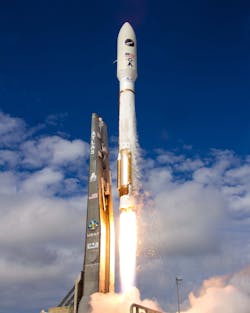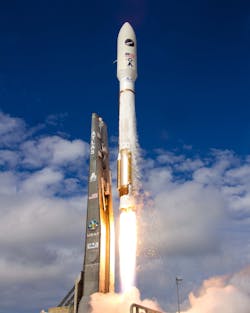United Launch Alliance Atlas V rocket instrumental in Air Force unmanned space vehicle launch, EELV program
CENTENNIAL, Colo., 12 Dec. 2012. The launch of the U.S. Air Force X-37B reusable unmannedspace vehicle into orbit completes “the most aggressive campaign in the history of the Evolved Expendable Launch Vehicle (EELV) program,” explains an executive at United Launch Alliance, headquartered in Centennial, Colo.
Ten missions in the EELV program launched during 2012, including eight launches from Cape Canaveral Air Force Station, Fla., and two from Vandenberg Air Force Station, Calif.
This launch is the third such launch of a U.S. Air Force Orbital Test Vehicle (OTV); ULA has facilitated all three. ULA helped to launch the first two missions on 22 April 2010 and 5 March 2011.
"The ULA team is proud to have played a critical role in successfully launching these three important Orbital Test Vehicle missions for the Air Force RCO," explains Jim Sponnick, ULA vice president, Mission Operations. "This is a unique spacecraft since it is the first to launch on an Atlas V, return to Earth landing at Vandenberg Air Force Base in California, and then fly again on this mission."
This mission was launched aboard an Atlas V EELV 501 configuration vehicle, which includes a 5-meter diameter payload fairing. The Atlas booster was powered by the RD AMROSS RD-180 engine; the Centaur upper stage was powered by a single Pratt & Whitney Rocketdyne (PWR) RL10A-4 engine.
The EELV program, established by the United States Air Force, provides access to space for Department of Defense (DOD) and other government payloads. The commercially developed EELV program supports a range of government mission requirements, while delivering on schedule and providing cost savings over heritage launch systems.
ULA's next launch is the Atlas V TDRS-K mission for NASA scheduled 29 Jan. 2013 from Space Launch Complex-41 at Cape Canaveral Air Force Station, Fla.
ULA program management, engineering, test, and mission support functions are headquartered in Denver, Colo. Manufacturing, assembly and integration operations are located at Decatur, Ala., and Harlingen, Texas. Launch operations are located at Cape Canaveral AFS, Fla., and Vandenberg AFB, Calif.
Follow Avionics Intelligence news updates on Twitter (@Avionics_Intel), LinkedIn, and Google+.

